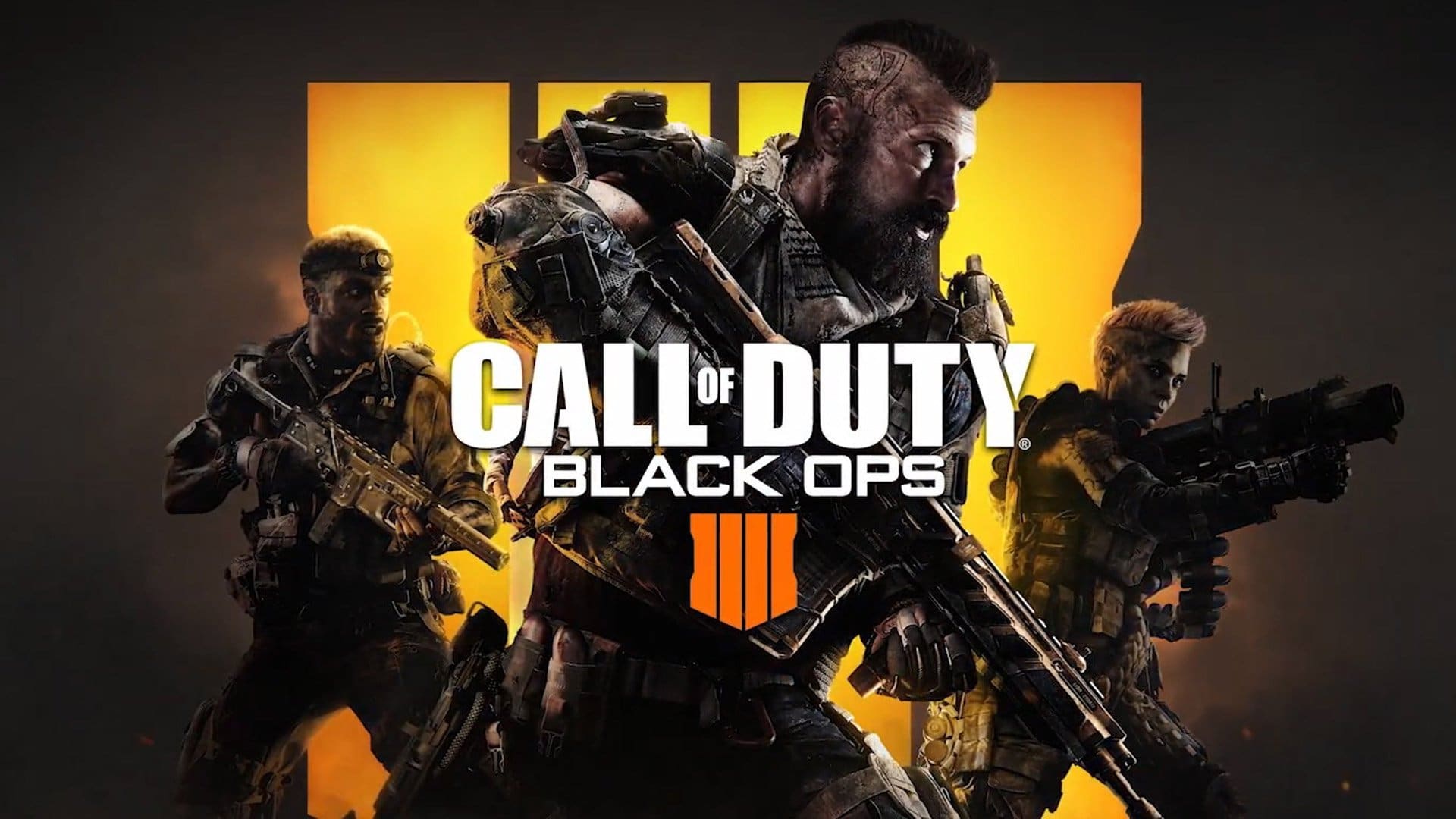Call of Duty: Black Ops 4 represents the biggest change to the Call of Duty franchise in a long time; single player is gone completely as Black Ops 4 decides to focus on a multiplayer-only experience. What we’re left with, then, is the traditional Call of Duty player-versus-player multiplayer, a new Zombies mode and Call of Duty’s battle-royale-bandwagon attempt Blackout all bundled together as one.
The question is, how do each of these components play, and is the complete package worth your money?
Let’s start by talking about the traditional multiplayer. For the most part, things are pretty similar but with a few positive tweaks: Wall-running and jetpacks are long gone, with a stronger focus back on the boots on the ground gameplay that the series reverted back to in Call of Duty: WWII. HP has been increased to 150, meaning the time-to-kill is slightly longer; I’m sure that some Call of Duty players will see this as a bad thing, but I’m a big fan of it, I’ve long thought that the time-to-kill has been too low on Call of Duty and has made engagements more about reaction time than skill, and this changes that. Now, it’s perfectly possible to shoot first but still lose a gunfight if your aim isn’t on point. Health no longer regenerates either, you have to manually heal yourself using the left bumper, this change forces you to think more carefully about whether to heal or reload following an engagement or whether to back out of a firefight altogether to heal up. It’s a small change but it makes a noticeable difference to how the game plays.
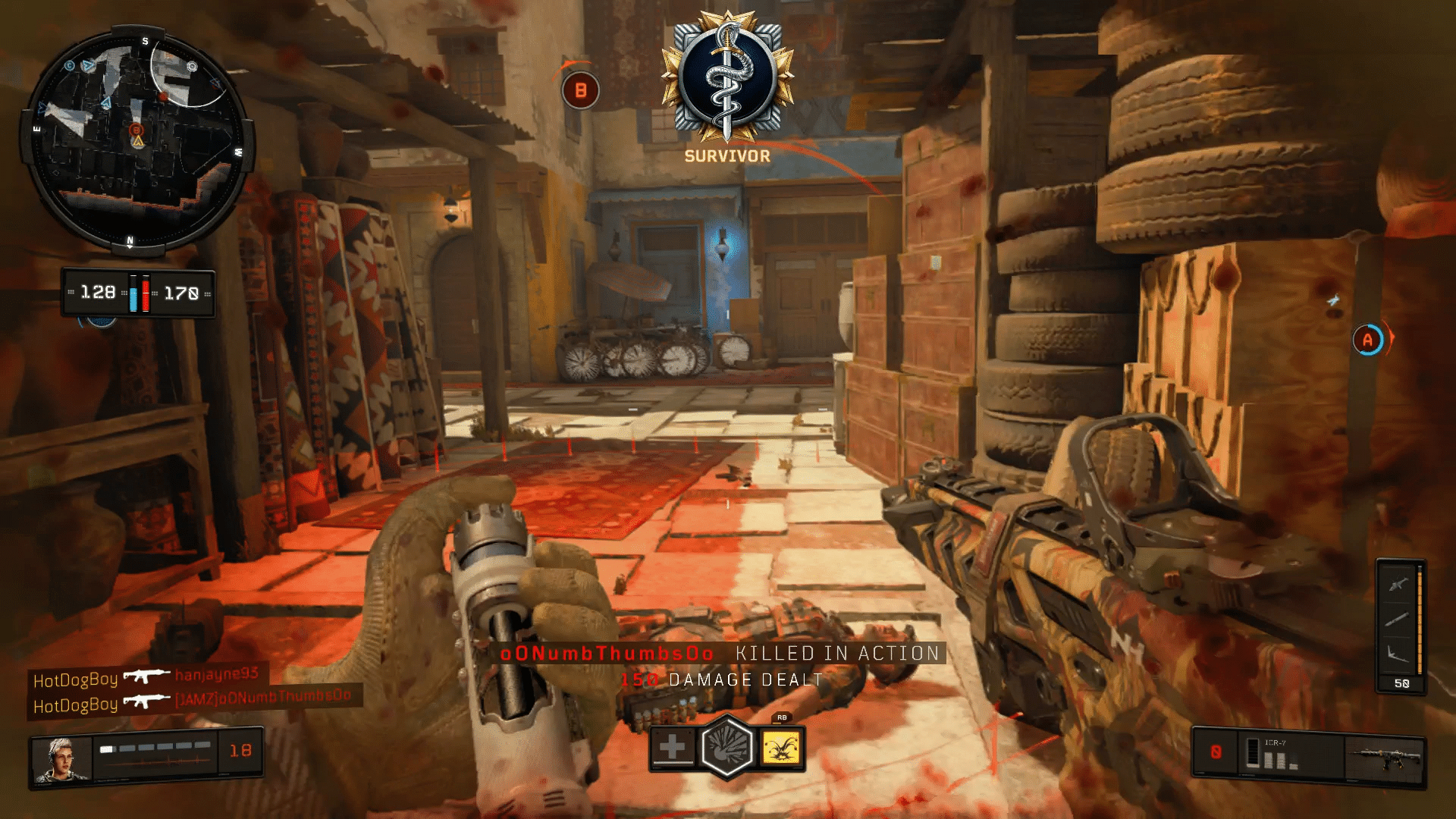
Grenades are now either tied to a Specialist (more on them later) or can be unlocked at a whopping Level 42 and will replace your Special Issue Equipment (more on that later, too). The result of this is a significant drop in grenade usage and, more importantly, grenade spam; no longer will you start capturing point B on Domination and then wince as grenades rain down on you from all angles, it all makes for a much less frustrating experience. Not everything has been improved upon, though. The respawns are, unfortunately, still a massive pain in the arse. They’re still almost-instant, meaning you can kill somebody and they’ll be back 10 seconds later, and I’ve had several instances of spawning directly behind an enemy or vice-versa, or even directly in the middle of a firefight. I really think the respawn system in Call of Duty needs a revamp, and I think a respawn timer across all modes would make a big difference.
Custom loadouts are here as always, complete with various weapon attachments, equipment and perks to choose from, and Scorestreaks are ever present too. The Specialist system introduced in Black Ops 3 returns and gets expanded, this time limiting you to one of each specialist per team in objective-based game modes, with each of the 10 Specialist’s available at launch combining your custom loadout with their own unique piece of Special Issue Equipment and a distinct “ultimate” ability that makes them more suitable for certain roles. For example, ‘Battery’ has a Cluster Grenade as her equipment and her War Machine Grenade Launcher as her ultimate, making her perfectly suited for an attack-based situation, whereas Recon’s equipment comes in the form of a Sensor Dart that reveals enemies in his proximity and his ultimate activates a Vision Pulse that reveals all enemies to himself and his teammates, making him more of a Support role. These abilities are all tied to their own individual cooldown timers and for the most part, they all feel pretty well balanced, with the possible exception of Nomad’s Attack Dogs ultimate which feels a bit overpowered.
This is a change that is clearly trying to take advantage of the success of Hero-shooters like Overwatch and Rainbow Six: Siege, but in those games your choice of Hero or Specialist can make a massive tactical difference to how the match plays out, and for the most part that simply isn’t the case here; in the standard Call of Duty modes that all return (Team Deathmatch, Hardpoint, Domination, Kill Confirmed etc) these Specialists feel more like a choice you make based purely on your own preferred playstyle rather than for any tactical reason. Even in the new ‘Control’ game mode, where teams take turns attacking or defending an objective with limited respawns, choice of Specialists seems to have little tactical impact on how a match plays out. Ultimately then, these Specialists and their varying playstyles are a welcome addition, but they aren’t game-changing, and people will largely just continually pick their favourite no matter the situation.
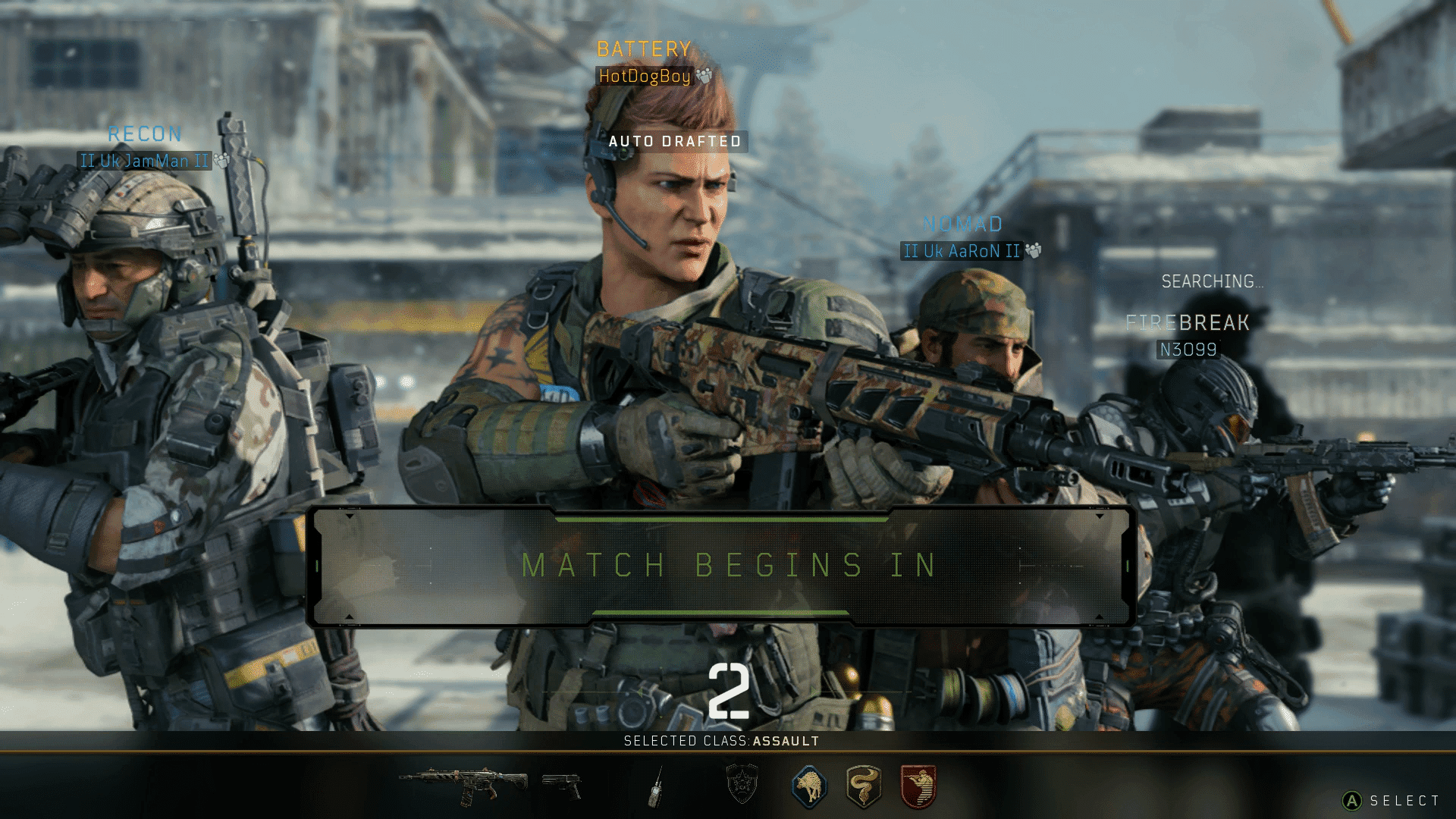
The other new game mode, ‘Heist’, where players fight to capture and extract a bag of cash with no respawns, practically ditches the Specialist system altogether, as it opts for a Counter-Strike-inspired ‘Buy Menu’ approach where players earn money from getting kills and reviving teammates and then use that money in between rounds to buy better weapons and equipment. It’s a fun mode and a welcome change of pace to the standard Call of Duty formula, but I have to say that in my time with the game mode I never actually saw the cash get extracted once, as the round constantly ended due to all members of the enemy team being eliminated. Some people may see this as a very minor issue, but it made the whole objective of the game mode seem pointless, as it just became an elimination-based affair.
Maps wise, there is a decent number with 14 available at launch, four of them—namely Firing Range, Jungle, Slums and Summit—being maps from previous Black Ops games with a visual upgrade. A 15th map is releasing free to all players in November, and that map is also an old-but-gold map, Nuketown. Now, I don’t want to be overly critical here, because these old maps are all classics and many people will be happy to see them included, but I can’t help but find it a bit lazy to put so many old maps in rather than creating new ones, especially when one of them is coming out as part of post-launch content. That being said, 10 original maps at launch is still about standard for any new shooter, meaning that the old maps sort of act as a bonus, so I guess I shouldn’t complain too much. Of the 10 new maps on offer, they all follow the same familiar three-lane approach that is standard in Call of Duty and there is a mixture of quality, with the lavish vineyard estate-based Hacienda and the coastal Spanish town-based Seaside being particular standouts, and Icebreaker, set around a long-lost US submarine, and the Japanese metropolis Gridlock being on the opposite end of the spectrum.
Overall then, the traditional multiplayer experience in Call of Duty: Black Ops 4 is the best that the series has offered in years, possibly since the original Black Ops. The lack of wall-running or jetpacking is welcome, and when you couple this with the increased time-to-kill, manual healing and the lesser presence of grenades it makes for a much more enjoyable experience. The Specialist system may not be as tactically important as similar systems are in other games, but it’s still enjoyable and it adds some much-needed variety to the gameplay, and the new game modes on offer do the same.
With all that being said, let’s move on to Blackout. The battle royale genre has taken over the gaming world in recent times, so it came as no surprise to me when Treyarch announced that they were going to include a battle royale mode in Black Ops 4. I can’t pretend that I was particularly excited, nor can I pretend that I’m a big battle royale fan, and I find the entire concept of simply copying somebody else’s idea to be lazy and lacking in imagination, but I also can’t deny that Blackout is brilliant.
Let’s talk candidly for a minute; this is basically a copy of Fortnite, which was basically a copy of PlayerUnknown’s Battlegrounds. All of the same hallmarks are here; you look at your map to decide where to drop, you parachute in, quickly scavenge for gear and make your way around the map, continually looking for better gear and trying to survive and become the last man standing, all while a massive circle slowly encompasses the map and forces all players together. You’ve played it before, you probably love it, and that’s why you’re trying Call of Duty’s version, so let’s talk about how Call of Duty’s version stands out from the pack.
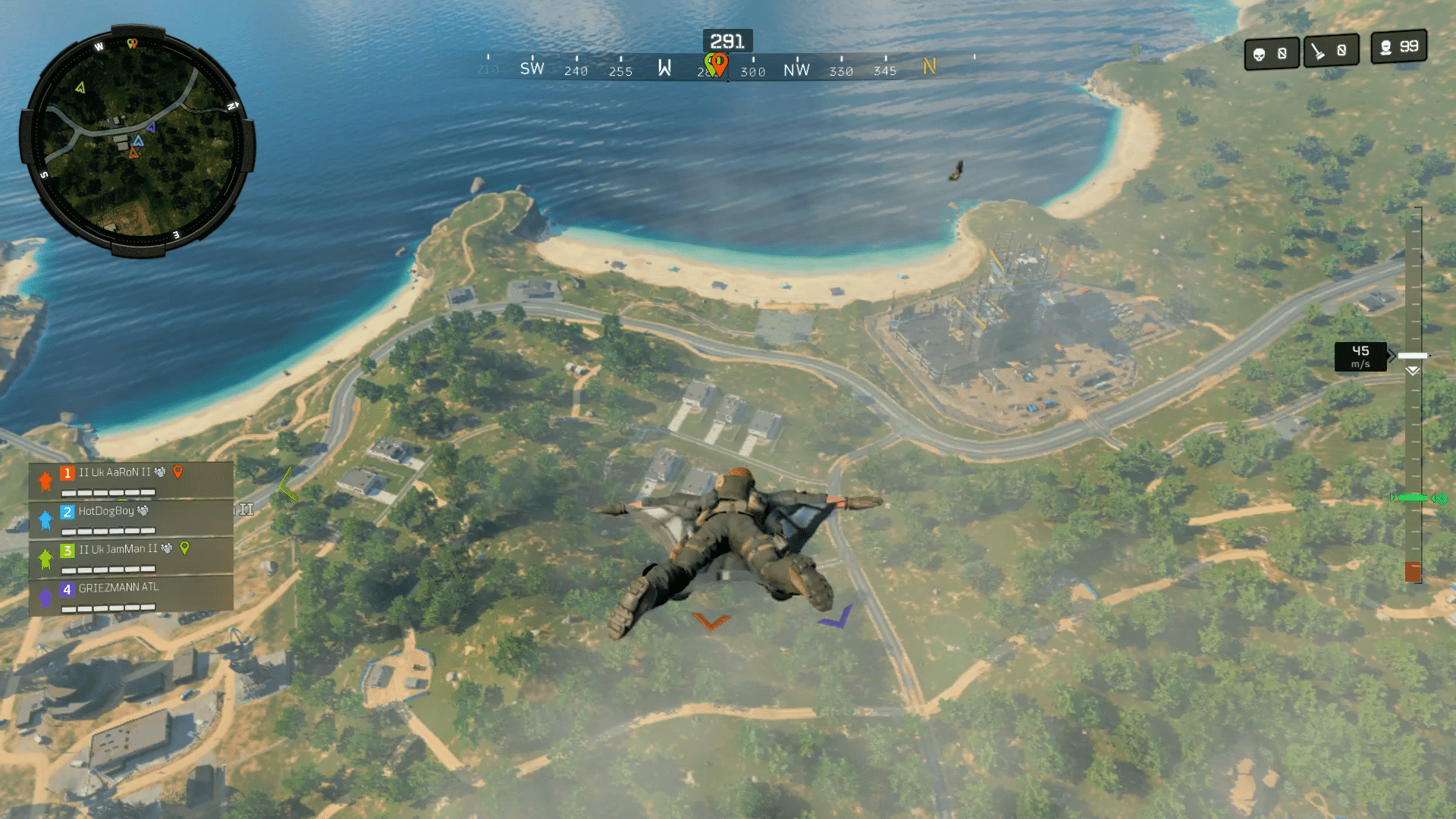
Blackouts map is perfect. It is the ideal size for the player count—which currently stands at 88 players in Solo or Duos and 100 players in Quads—and it never feels either too small or too large. It’s possible to avoid combat like a coward if you so wish, but you’re never too far away from the action that you feel like you’re in an empty game. Because of this, matches never seem to drag on for too long, so you never get bored.
The different areas of the map are all based on previous maps from the Black Ops franchise such as Asylum, Nuketown and Array, with some being changed and some being an almost direct copy, meaning they are all instantly recognisable to any Call of Duty fan. Loot is plentiful, so you should be able to get geared up relatively quickly after landing, which makes you feel like you’re always going to have a fighting chance. The usual guns and attachments are all available to be picked up, as well as bandages, medkits and trauma kits to heal yourself up or even give you an HP boost, and you can grab armor too. You can also pick up perks that can be used to give yourself a temporary boost, such as Awareness which makes enemy footsteps louder for 120 seconds. Usage of these perks is surprisingly tactical, the aforementioned Awareness is especially useful in the late-game as all players get crowded together into a small area, while Looter—which highlights nearby lootable items and stashes for 120 seconds—is very useful in early-game.
Blackout also features vehicles such as trucks, ATVs, boats and helicopters. These vehicles are very useful for traversing the map quickly, especially if the circle is closing in on you, and they can give you an advantage over your vehicle-less enemies, but they do make you stand out like a sore thumb and turn you into an instant target. The vehicles are only really useful in group matches, so solo players shouldn’t expect to be using them too much. In a first for a battle royale game, there are NPC’s on the map in the way of COD’s own Zombies. The zombies spawn at different locations around the map and when killed they drop all manner of tasty loot, often rare or legendary items. Tied to these locations are Mystery Boxes, which also offer valuable loot and are designed to lure brave players into a danger-infested area. These areas are indicated by a massive ray of light in the sky, meaning that you can, of course, avoid them if you so wish, but if you think the reward could outweigh the risk then it’s time to go zombie hunting; don’t forget though, there’s bound to be some other players doing the same thing as you, so you’re bound to have some company. This adds another dimension not seen before in the battle royale genre, and it’s a welcome addition.
The most important part of Blackout that makes it stand above its peers, though, is the simple fact that it features Call of Duty’s polished and satisfying movement and gunplay. The Call of Duty series is renowned for its pick-up-and-play, run-and-gun gameplay that makes it so accessible and fun to play, and that’s a key part of Blackout’s success. One minute you’re slowly moving around the map, scouting through buildings that have clearly already been looted, tracing the steps of a foe that you know is nearby, and the next minute you’re in a fast-paced firefight that could be straight out of one of Call of Duty’s standard competitive modes. It manages to be a completely different way to play Call of Duty while also feeling exactly the same, and that’s an achievement that shouldn’t be understated.
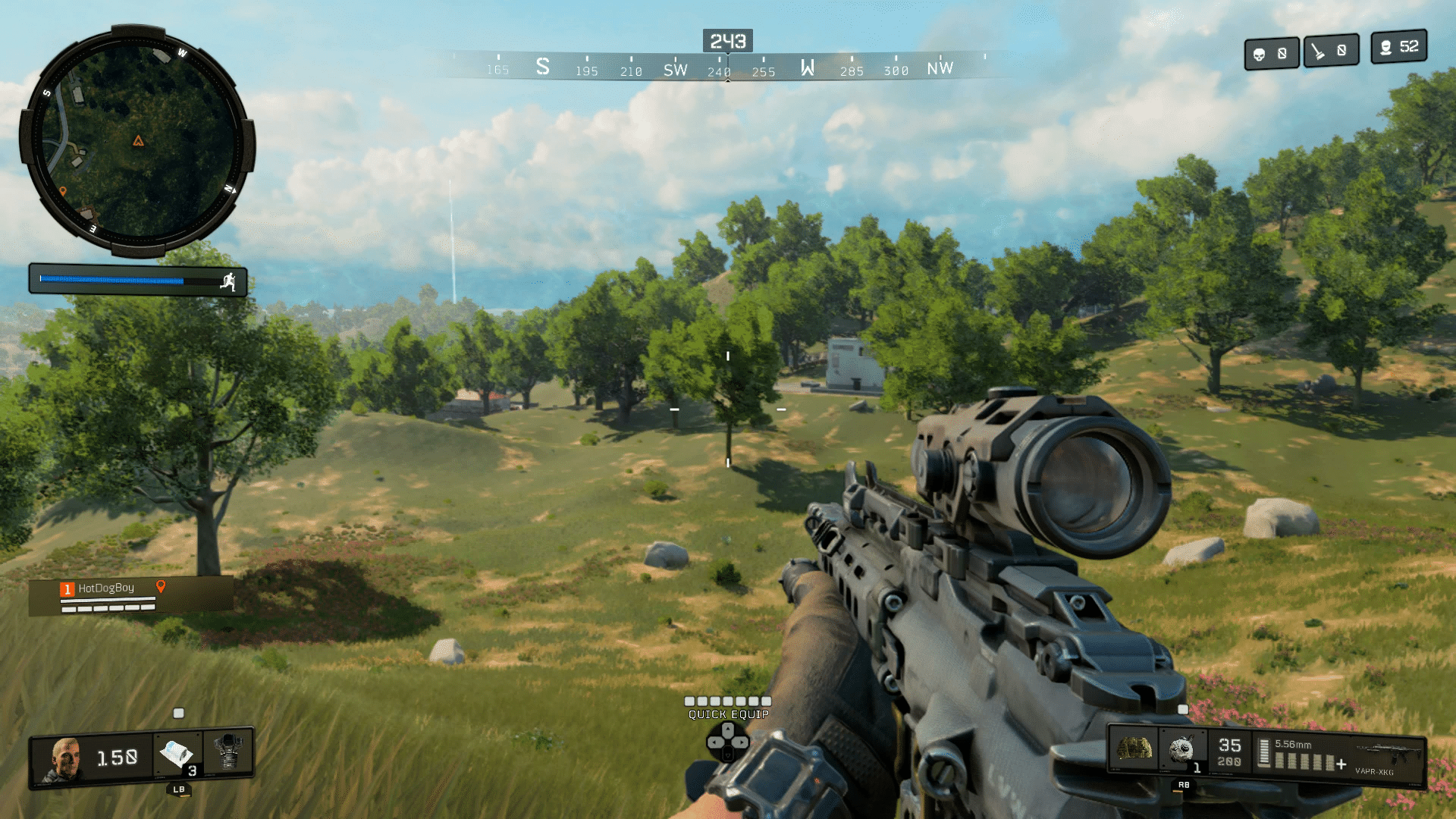
Playing on the Xbox One, though, I did have some performance issues. These were sporadic and didn’t last long and could be described as either lag or frame rate issues; my friends experienced these issues too, so I know it’s nothing to do with my connection. They aren’t game-breaking, and I’m hoping that it can be fixed with a simple patch, but it needs mentioning.
Overall then, Blackout is a roaring success. Although essentially a copy, it’s a completely new but instantly familiar way to play Call of Duty and I couldn’t imagine the game without it. The inclusion of zombies and iconic maps is a stroke of genius that makes Blackout feel like a celebration of the franchise rather than just an act of jumping on the bandwagon, and coupling this with the instantly accessible and satisfying gameplay of Call of Duty results in the most enjoyable battle royale experience to date.
On to the final piece of the jigsaw then – Zombies. Zombies has evolved a lot since Treyarch introduced it in Call of Duty: World at War back in 2008. Upon first launching Black Ops 4’s effort, it is immediately bewildering. If you can launch this mode and not be at least slightly confused by the menus and all the information it throws at you then you’re a better person than me. Admittedly, I haven’t been a massive Zombies player in recent years so this may all be second nature to seasoned veterans, but to a bit of a Zombies newbie like myself, it’s a lot of information to process at once. Luckily, there is an in-depth tutorial mode for the first time in the modes history that will make it all easier to understand.
You still have perks to choose from that are accessible through vending machines in-game, but there are now only four on the map and you get to pick which four you want before a match. Elixirs are new and are assigned to your D-pad, acting as temporary boosts or abilities that operate on a cooldown. Again, you can choose which four elixirs to head into battle with before the game, and I’ve found some of them to be particularly invaluable in all games, such as the Anywhere But Here elixir that instantly transports you to a random location on the map, giving you the perfect escape if you’re in an almost-certain death situation. Also new are Special Weapons which you—once again—choose before the game and charge up by killing zombies. These special weapons are unbelievably fun and satisfying to use as you instantly become a zombie-shredding machine, and they’re very useful in getting yourself out of sticky situations. It’s not all new though, as the Mystery Box and the weapon-upgrading Pack-A-Punch machine return and are as important as ever.
There are three maps at launch for all players, or four if you bought the Season Pass or a Special Edition of the game. Two of these maps, namely; IX, which takes place in a gladiatorial arena above a network of tunnels and crypts, and Voyage of Despair, which takes place aboard the Titanic directly after it collided with an iceberg, introduce a new Chaos story as well as four new characters to go with it. The other two maps on offer; Blood of the Dead, which is set in Alcatraz Prison and is a remake of the Mob of the Dead map from Black Ops 2, and the pay-more-for Classified, which is a remake of the Pentagon map from the original Black Ops, features the Aether storyline. All of these maps are varied in their own way and feature a good blend of open spaces and narrow, claustrophobic corridors for you to find your way through.
There are narratives here, depicted via cutscenes introducing the maps, at-times-hilarious voice lines that the characters throw back and forth during the game and in easter eggs found throughout the maps. Following these narratives is a real struggle, especially when you’re too busy mowing down waves of flesh-eating zombies to pay attention to what anyone is saying. That’s what Zombies is all about though, at the end of the day; taking down wave after wave of the undead, seeing how long you can survive and having a shit-tonne of fun along the way, and to that note, Black Ops 4 absolutely nails it.
Zombies in Black Ops 4 is unbelievably fun. The stories may be insanely difficult to follow, and all of its features may be overwhelming at first, but once you get into the nitty gritty of it all, Zombies is fast-paced, addictive, hilarious and insanely fun, particularly when you’re playing with a group of friends.
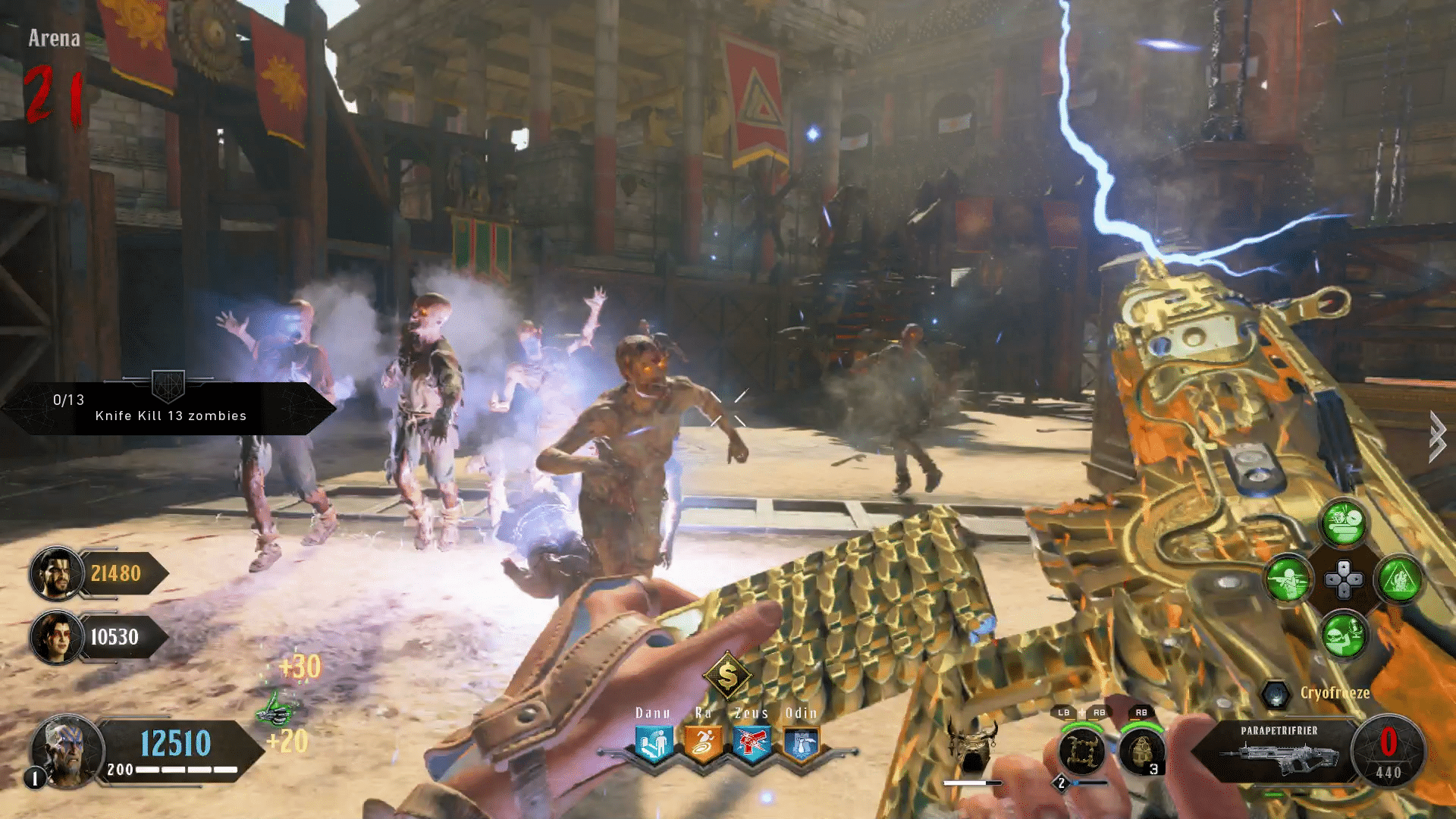
Similarly to Blackout, though, I did suffer from a technical issue. I hit a couple of cases of my game completely crashing when I had been killed and was spectating a friend, and it happened to my buddy a couple of times too. Again, I’m hoping this is something that can be fixed with a patch.
The other mode that you’ll spot on Black Ops 4 is “Specialists HQ”, which acts as an introduction and a tutorial to each of the Specialists on offer in the traditional multiplayer and gives them some small backstories that are depicted through short cutscenes. These cutscenes look astonishing, but to access them all you’ll have to play through a number of tedious and mind-numbing tutorial games against mindless AI enemies, and it just isn’t worth the hours of boredom you’ll have to endure to see them all.
Anyway, I’ll revert back to the questions that I asked right at the beginning of this review, how do each of these components play, and is the complete package worth your money? The answer is simple; all three of the components are great, and the complete package is most definitely worth your money. Although respawns still need addressing, small changes to the traditional multiplayer make it the best effort for years, Blackout is the most fun and accessible battle royale game I’ve played yet, and Zombies will provide you with endless fun and hilarity with your mates. The decision to drop campaign from the game was a controversial one, even with me, but the biggest compliment that I can give this game is that such is the quality of the different modes on offer that I didn’t miss the campaign one bit. There are a couple of minor technical issues that need addressing, but hopefully a patch resolves them.
Black Ops 4 is the best Call of Duty game in years then, possibly since the days of the original Black Ops, but there is one thing that I need to talk about before I go, and that is Black Ops 4’s downloadable content model. All players will get free content updates, but if you want any of the premium DLC—namely 4 new Zombies maps, 12 new multiplayer maps and 4 exclusive Blackout characters—you will have to buy the Season Pass. None of these DLC packages will be available to buy individually; you will have to fork up £39.99 up front to get access to any of it. Not only will this split the player base, as I’m sure there will be plenty of people who don’t want to do that, but it’s asking you to pay for something in advance without having any idea of the quality of it or whether it’s worth your money. I can’t see it as anything other than exploitative. There will be plenty of players who want to play the first batch of DLC but will have moved on to another game a month or two later, but with this DLC model, those people are going to have to either miss out or pay forty quid for the privilege.
I’ve thought long and hard about whether I should let this affect my score for the game, as it doesn’t impact the game that’s on offer at launch, and the launch game is absolutely worth the cost of the purchase, but this DLC model will, ultimately, affect your experience of the game moving forward, so for that reason I’ve decided to dock it a point based on this.
Overall though, Call of Duty: Black Ops 4 is a roaring success. It does little new, deciding instead to draw inspiration from the recent successes of various games, bringing them all together into one big, polished, accessible package, the likes of which few games other than Call of Duty could ever hope to pull off, and its detractors can’t argue.
